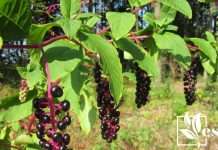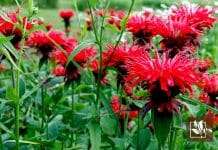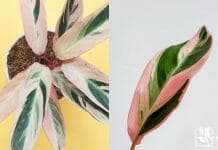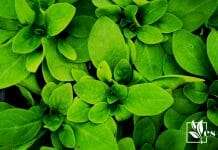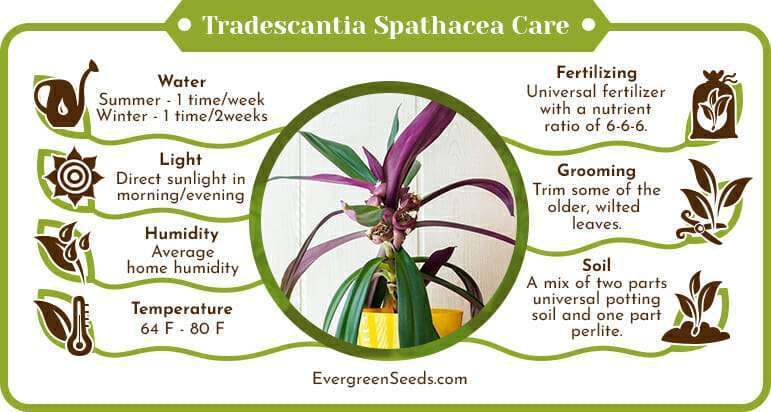
Tradescantia spathacea care is excellent for beginners as well as indoor gardeners who want to add a splash of color to their homes.
Moses-in-the-cradle is a stunning houseplant of the Commelinaceae spiderwort family that has a vivid purple hue. Popular among indoor gardeners that enjoy the Tradescantia genus plants, it’s also easy to care for.
In this guide, our gardening team will explain all you need to know about caring for and growing Tradescantia spathacea!
JUMP TO TOPIC
Tradescantia Spathacea Care Guide
It is easy to care for, easy to propagate, and it won’t take as much space as its trailing cousins from the Tradescantia genus. Here’s what you need to know about growing this fantastic plant.
 Light Requirements
Light Requirements
Tradescantia spathacea prefers growing in bright indirect light. This plant can tolerate a wide range of light conditions, but too much or too little sun can affect its growth. Partial shade will result in leggy stems and faded colors, and the leaves may even revert to their natural green color. On the other hand, too much sun will scorch the foliage.
We recommend keeping it in a room with eastern or western exposure, where it can receive a couple of hours of direct sunlight in the morning or evening. This will maintain its vivid colors and compact shape.
 Temperature Requirements
Temperature Requirements
Tradescantia spathacea can be grown in temperatures ranging from 64 to 80 F (18 to 27 C). Its growth can become stunted if exposed to temperatures below 55 F (13 C), and the plant will suffer permanent damage in freezing conditions.
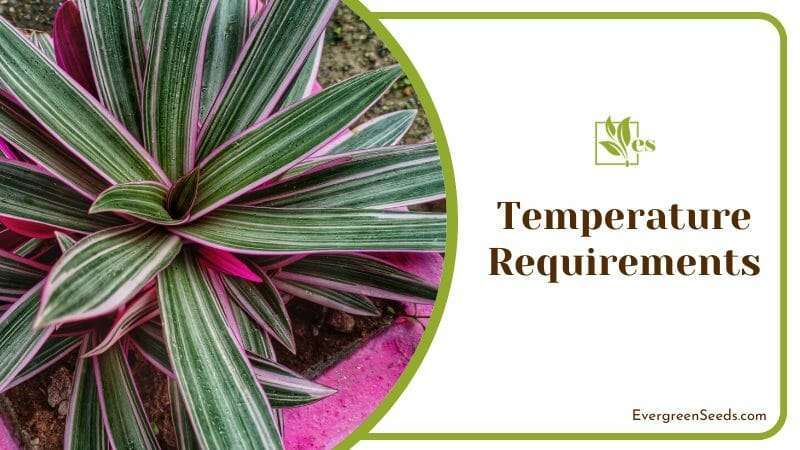
To keep it happy, make sure that it’s not exposed to any drafts and sudden changes in temperatures.
If you plan to grow Moses-in-the-cradle in your garden, keep in mind that plants belonging to the Tradescantia genus can be very weedy, and in some cases, invasive. These plants are remarkably adaptable and can easily self-propagate from broken stems.
Tradescantia spathacea has naturalized in Florida and Louisiana, and although its impact on the local ecosystem is still being studied, it is listed as a Category II invasive exotic species.
You can grow Tradescantia spathacea outdoors if you live in USDA zones 9 to 12. Pick a part of your garden that receives plenty of sun in the morning but is sheltered from the intense midday sun. To prevent the unwanted spread of this plant, our recommendation is to grow it in containers rather than garden beds.
 Water Requirements
Water Requirements
Keep the soil of your Tradescantia spathacea moist but not soaked. As a rule of thumb, we recommend testing the soil with your finger before watering the plant. If the top inch feels dry to the touch, use the soak-and-drain method for watering it. In summer, you can water it once a week, then reduce the watering frequency to once every 10 – 14 days in winter.
 Humidity Requirements
Humidity Requirements
Tradescantia spathacea is not too pretentious when it comes to humidity. The average home humidity level should be more than enough for this plant. However, if you notice that the tips of the leaves are becoming brown and crispy, you can give it a humidity boost by placing it on top of a pebble tray.
 Soil Requirements
Soil Requirements
Plant your Tradescantia spathacea in a soil mix that is loose, porous, and well-draining. Its roots are thin and delicate, and they can be very susceptible to root rot if the soil stays constantly wet.
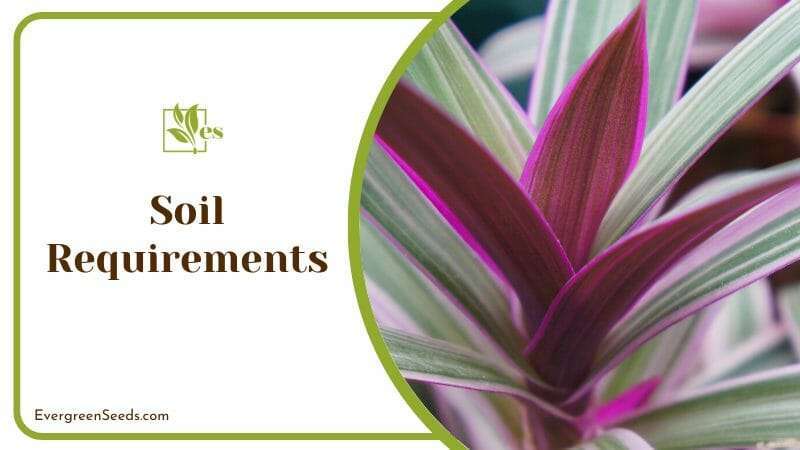
We recommend using a mix of two parts universal potting soil and one part perlite. As an alternative, combining equal parts universal potting mix, cactus soil, and perlite or vermiculite also works.
 Fertilizer Requirements
Fertilizer Requirements
Tradescantia spathacea is not a heavy feeder. Once a month, throughout spring and summer, you can apply a liquid fertilizer solution to help the plant develop new growth. A balanced, universal fertilizer with a nutrient ratio of 6-6-6, diluted to half the strength, should do the trick. You don’t have to give the plant any additional fertilizers from mid-autumn until the end of winter.
 Pruning and Maintenance
Pruning and Maintenance
Compared to other Tradescantia species, Moses-in-the-cradle requires very little pruning. On occasion, you will need to trim some of the older, wilted leaves from the bottom of the stem. You can also prune the top of the plant if you want to propagate it. Always use a sharp, sterilized blade for pruning your plant to prevent spreading pathogens from one plant to another.
Repotting
Tradescantia spathacea has a slow growth rate and can take up to five years to reach its full size. This means that you will only need to repot it once every two to three years. If you notice that the roots are starting to come out of the drainage holes, simply repot the plant to a container that’s one size larger than the previous one.
Propagation Guide
You can propagate the Moses-in-the-cradle plant using any of these three methods: stem cuttings, plant division, and seeds.
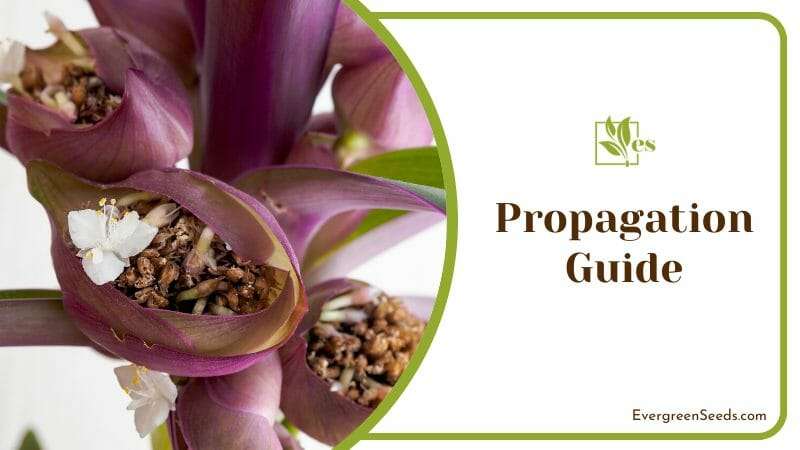
All three methods are very beginner-friendly, and we recommend using each in spring. Let’s take a closer look at each one.
Here is how to do it using stem cuttings:
- This is one of the easiest methods for propagating Moses-in-the-cradle. Use a sharp, sterilized blade and cut the stem in between the growth nodes.
- You can either root the cuttings in water or plant them in a well-draining soil mix.
- There’s no need to use rooting hormone, as the cuttings will develop roots in a couple of weeks.
Here is how to propagate using plant division:
- We recommend using this method at the same time as repotting your Moses-in-the-cradle plant to avoid disturbing the roots too much.
- Simply take the plant out of the pot, and remove as much soil as you can.
- Use your fingers to gently divide the main plant into several sections, then plant each section into a separate pot. That’s it!
Here is how to do seed propagation:
- The Moses-in-the-cradle plant will flower throughout the year. If the flowers have been pollinated, they will produce seeds. Wait until the seed pods are brown and dried, then cut them from the stem and collect the seeds.
- Fill a shallow container with a well-draining soil mix, sprinkle the seeds on top, and cover with a light layer of soil.
- Water gently, and keep the tray in a warm room with bright indirect light. The seeds will germinate in a few weeks.
Common Problems
Tradescantia spathacea rarely suffers from pests and diseases.
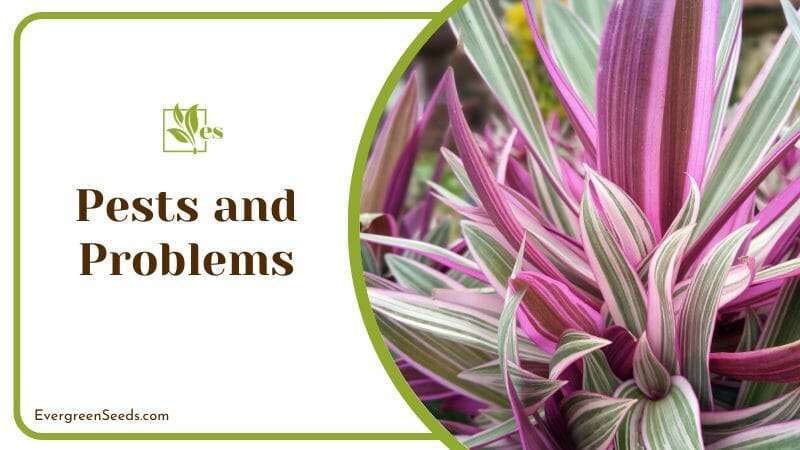
Most problems you’ll encounter, such as yellowing leaves, are caused by either too much water, poor-draining soil, or too little light.


